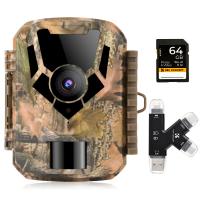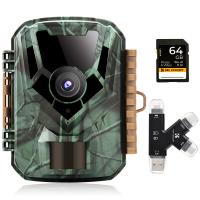How Do I Clear An Sd Card?
Clearing an SD card is a common task that many people need to perform for various reasons, such as freeing up space, preparing the card for a new device, or simply starting fresh. Whether you're a photographer, a tech enthusiast, or just someone who uses SD cards for storage, knowing how to properly clear an SD card is essential. In this article, we will explore different methods to clear an SD card, the tools you might need, and some best practices to ensure the process is smooth and effective.
Understanding the Basics

Before diving into the methods, it's important to understand what clearing an SD card entails. Clearing an SD card means erasing all the data stored on it. This can be done in several ways, such as formatting the card or manually deleting files. Each method has its own advantages and disadvantages, and the best choice depends on your specific needs.
Method 1: Manually Deleting Files

One of the simplest ways to clear an SD card is by manually deleting the files. This method is straightforward and doesn't require any special tools or software.
Steps:

1. Insert the SD Card: Insert the SD card into your computer's card reader. If your computer doesn't have a built-in card reader, you can use an external USB card reader.
2. Open File Explorer: On Windows, open File Explorer. On Mac, open Finder.
3. Locate the SD Card: Find the SD card in the list of drives. It is usually labeled as "Removable Disk" or with the name of the card.
4. Select Files: Select all the files and folders on the SD card. You can do this by pressing `Ctrl + A` on Windows or `Cmd + A` on Mac.
5. Delete Files: Press the `Delete` key on your keyboard or right-click and select "Delete."
6. Empty Recycle Bin: To ensure the files are permanently deleted, empty the Recycle Bin (Windows) or Trash (Mac).
Pros:

- Simple and quick.
- No need for additional software.
Cons:
- Files can be recovered using data recovery software.
- Not suitable if you need to ensure data is completely unrecoverable.
Method 2: Formatting the SD Card
Formatting is a more thorough way to clear an SD card. It not only deletes all the files but also resets the file system, which can help resolve any issues with the card.
Steps:
1. Insert the SD Card: Insert the SD card into your computer's card reader.
2. Open Disk Management: On Windows, right-click on the Start button and select "Disk Management." On Mac, open "Disk Utility" from the Applications > Utilities folder.
3. Select the SD Card: In Disk Management or Disk Utility, find and select the SD card.
4. Format the Card: On Windows, right-click the SD card and select "Format." On Mac, click the "Erase" tab in Disk Utility. Choose the file system (usually FAT32 or exFAT) and click "Start" (Windows) or "Erase" (Mac).
Pros:
- More thorough than manual deletion.
- Can fix file system errors.
Cons:
- Files can still be recovered with advanced data recovery tools.
- Takes longer than manual deletion.
Method 3: Using Specialized Software
For those who need to ensure that the data on the SD card is completely unrecoverable, using specialized software is the best option. These tools overwrite the data multiple times, making it nearly impossible to recover.
Steps:
1. Choose Software: Select a data erasure tool such as CCleaner, Eraser, or Disk Drill.
2. Install and Open Software: Download, install, and open the software.
3. Select the SD Card: In the software, select the SD card you want to clear.
4. Choose Erasure Method: Choose a secure erasure method. Most tools offer multiple passes (e.g., 3-pass, 7-pass) for increased security.
5. Start Erasure: Start the erasure process and wait for it to complete.
Pros:
- Ensures data is completely unrecoverable.
- Suitable for sensitive information.
Cons:
- Takes the longest time.
- Requires additional software.
Best Practices
Regardless of the method you choose, there are some best practices to follow when clearing an SD card:
1. Backup Important Data: Before clearing your SD card, make sure to back up any important data. Once the data is deleted or the card is formatted, it may be difficult or impossible to recover.
2. Check for Errors: If you're experiencing issues with your SD card, use tools like chkdsk (Windows) or First Aid (Mac) to check for and repair errors before clearing the card.
3. Safely Eject the Card: Always safely eject the SD card from your computer to avoid data corruption. On Windows, click the "Safely Remove Hardware" icon in the system tray. On Mac, drag the SD card icon to the Trash.
4. Use Reliable Tools: If you choose to use specialized software, make sure it is from a reputable source to avoid malware or data loss.
Clearing an SD card is a task that can be accomplished in several ways, each with its own set of advantages and disadvantages. Whether you choose to manually delete files, format the card, or use specialized software, the method you select should align with your specific needs and the level of data security required. By following the steps outlined in this article and adhering to best practices, you can ensure that your SD card is cleared effectively and safely.













There are no comments for this blog.